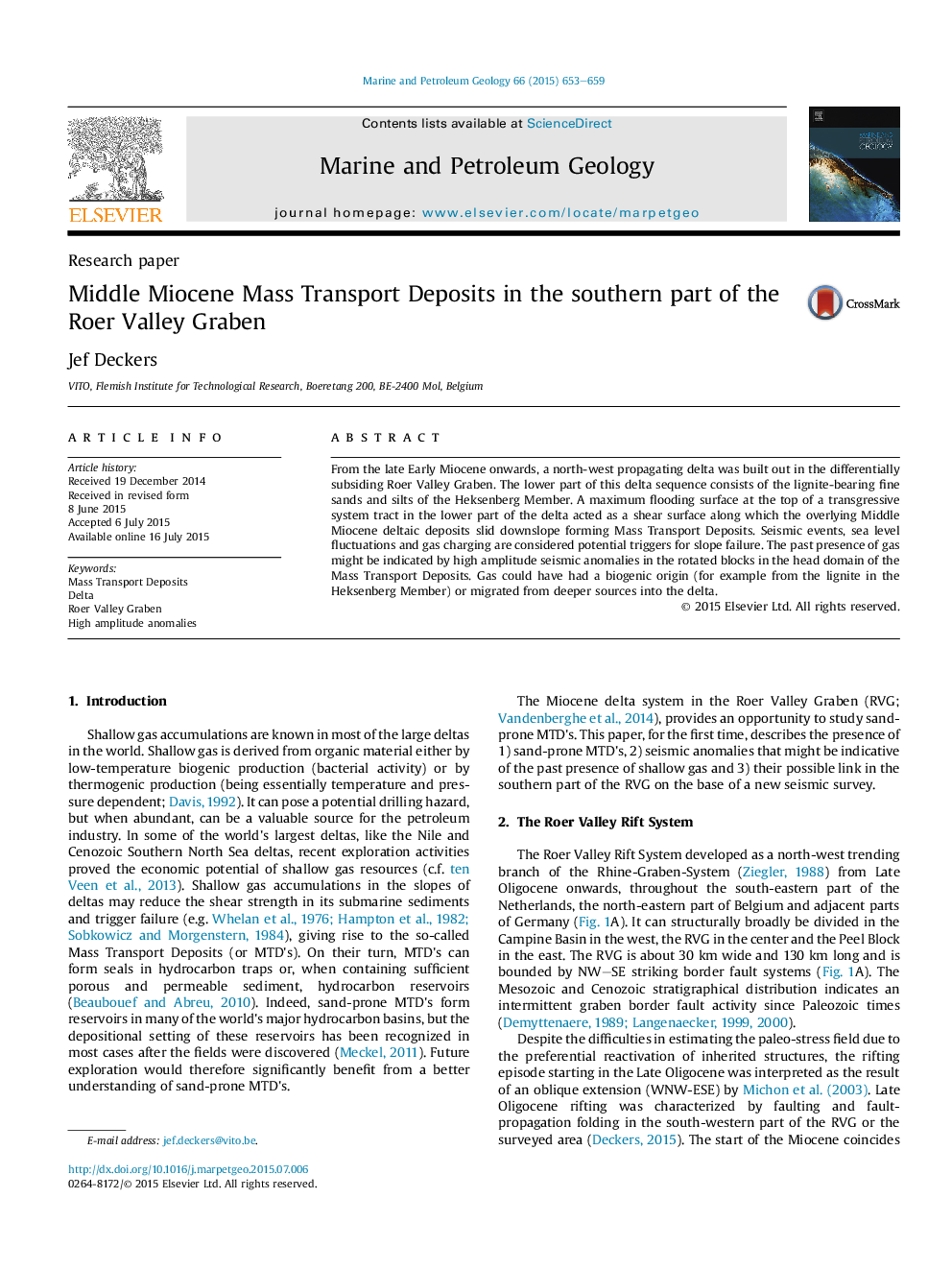| Article ID | Journal | Published Year | Pages | File Type |
|---|---|---|---|---|
| 4695482 | Marine and Petroleum Geology | 2015 | 7 Pages |
•A late Early Miocene to Middle Miocene sand-prone delta developed in the southern part of the Roer Valley Graben.•I have shown the presence of Mass Transport Deposits (MTD's) in the lower part of the delta.•A maximum flooding surface acted as a basal shear surface along which the overlying deposits slid downslope forming the MTD's.•Seismic events and sea level fluctuations in addition to gas charging are likely causes for slope failure.
From the late Early Miocene onwards, a north-west propagating delta was built out in the differentially subsiding Roer Valley Graben. The lower part of this delta sequence consists of the lignite-bearing fine sands and silts of the Heksenberg Member. A maximum flooding surface at the top of a transgressive system tract in the lower part of the delta acted as a shear surface along which the overlying Middle Miocene deltaic deposits slid downslope forming Mass Transport Deposits. Seismic events, sea level fluctuations and gas charging are considered potential triggers for slope failure. The past presence of gas might be indicated by high amplitude seismic anomalies in the rotated blocks in the head domain of the Mass Transport Deposits. Gas could have had a biogenic origin (for example from the lignite in the Heksenberg Member) or migrated from deeper sources into the delta.
